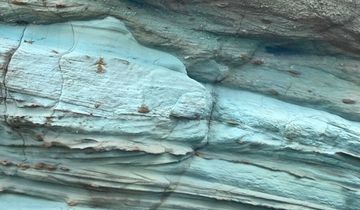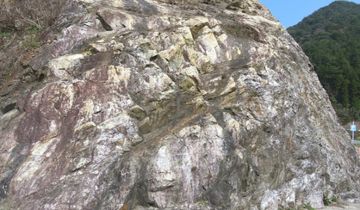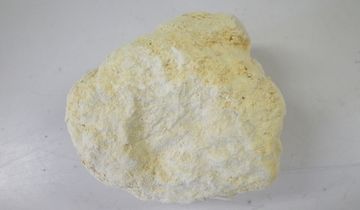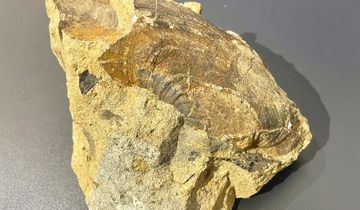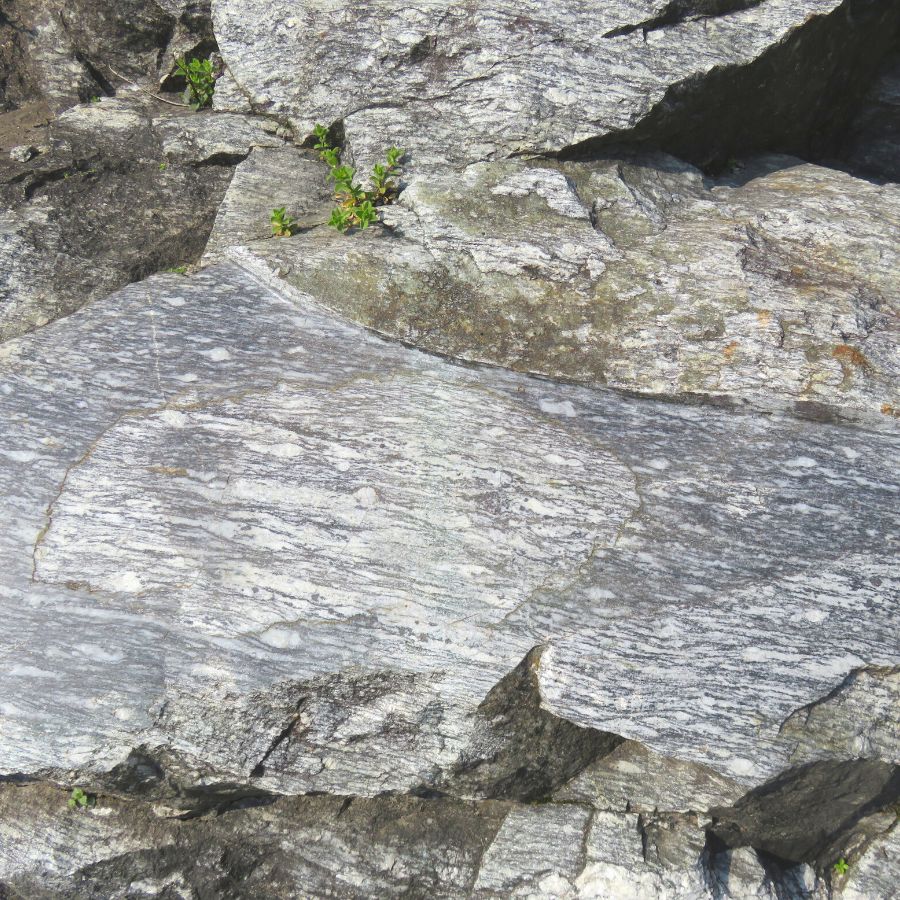
Geohistory - Rocks from Continental to Sea Periods
This gneiss (metamorphic rock) from 250 million years ago is the oldest type of rock in the Oki Islands. Since at that time Japan was part of the supercontinent, this rock tells us about how the Japanese archipelago was formed. Oki gneiss started as sand and mud sediments at the bottom of a sea. Tectonic plate subduction relocated it to about 15 km underground, where intense heat and pressure transformed them into a rock with a white and black striped pattern.
Gneiss that formed around the same time period is also found in the Hida area (Gifu Prefecture, central Honshu) and in the Korean Peninsula. Because of this, it can be inferred that these areas and the Oki Islands were once connected. Typical gneiss can be seen in the cliffs around Chōshi Dam in the center of Dōgo Island. It is often used as gravel for roads and such in Dōzen and Dōgo, making it one of the most universally seen rocks in the Oki Islands.


